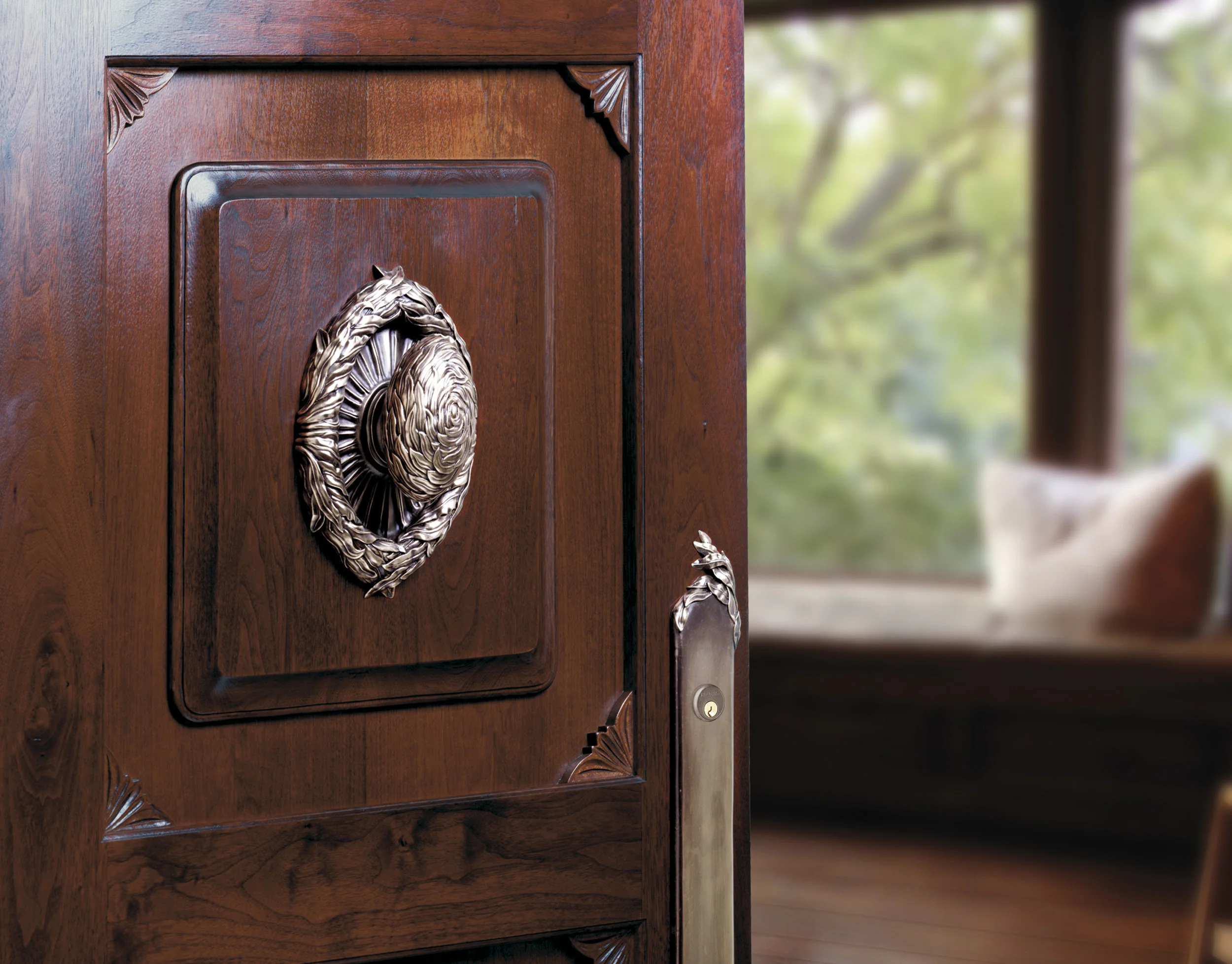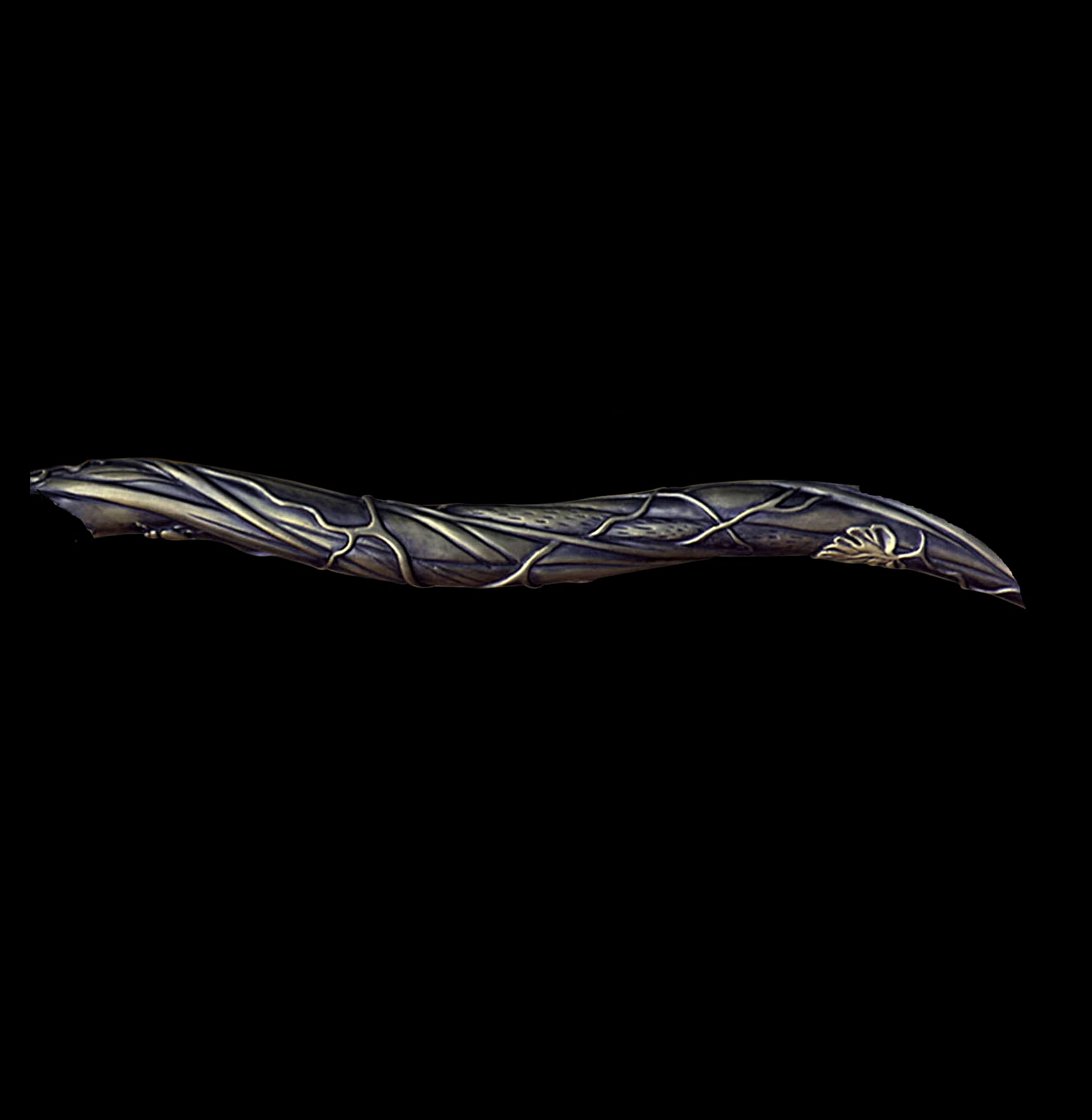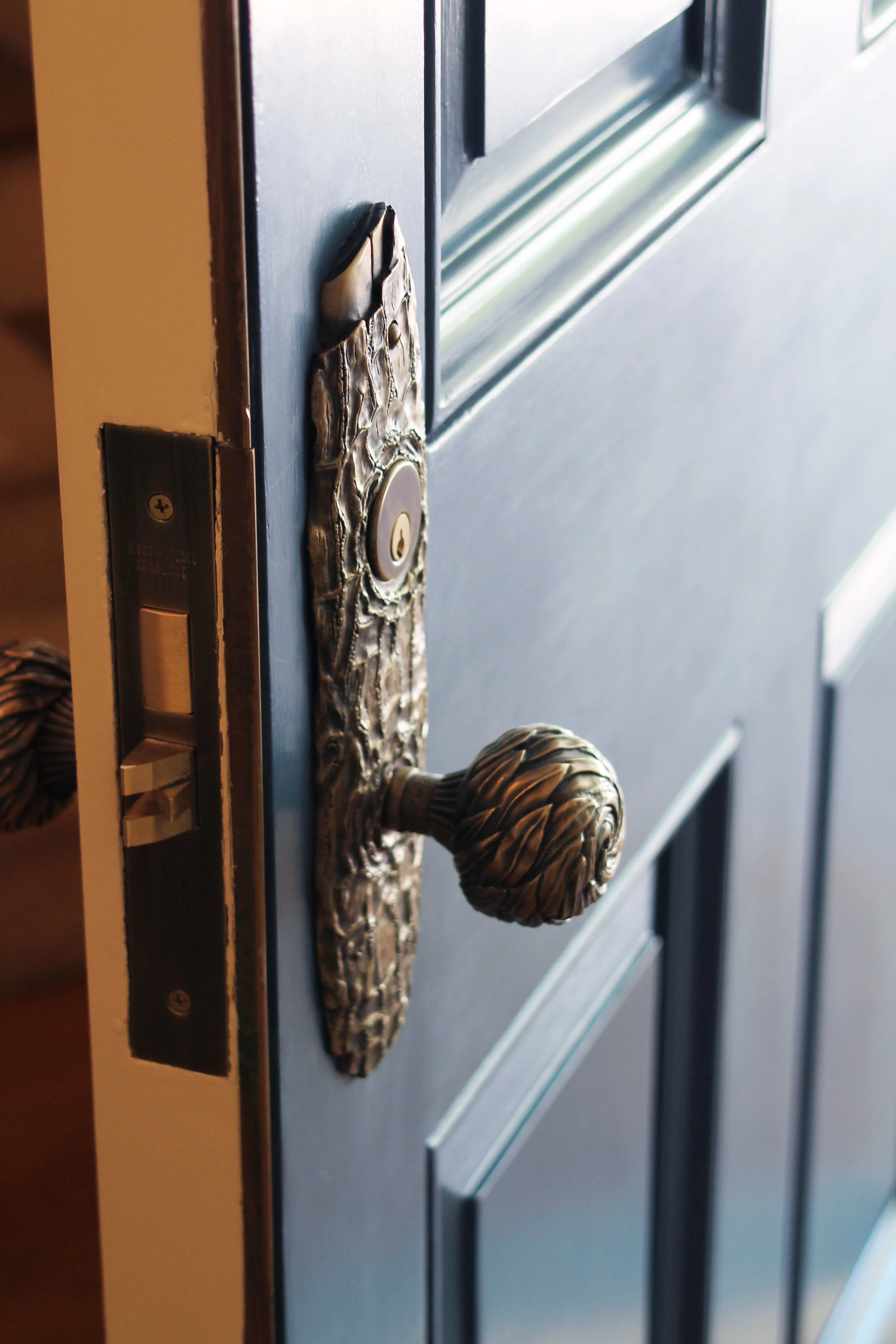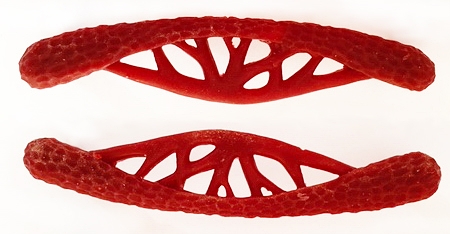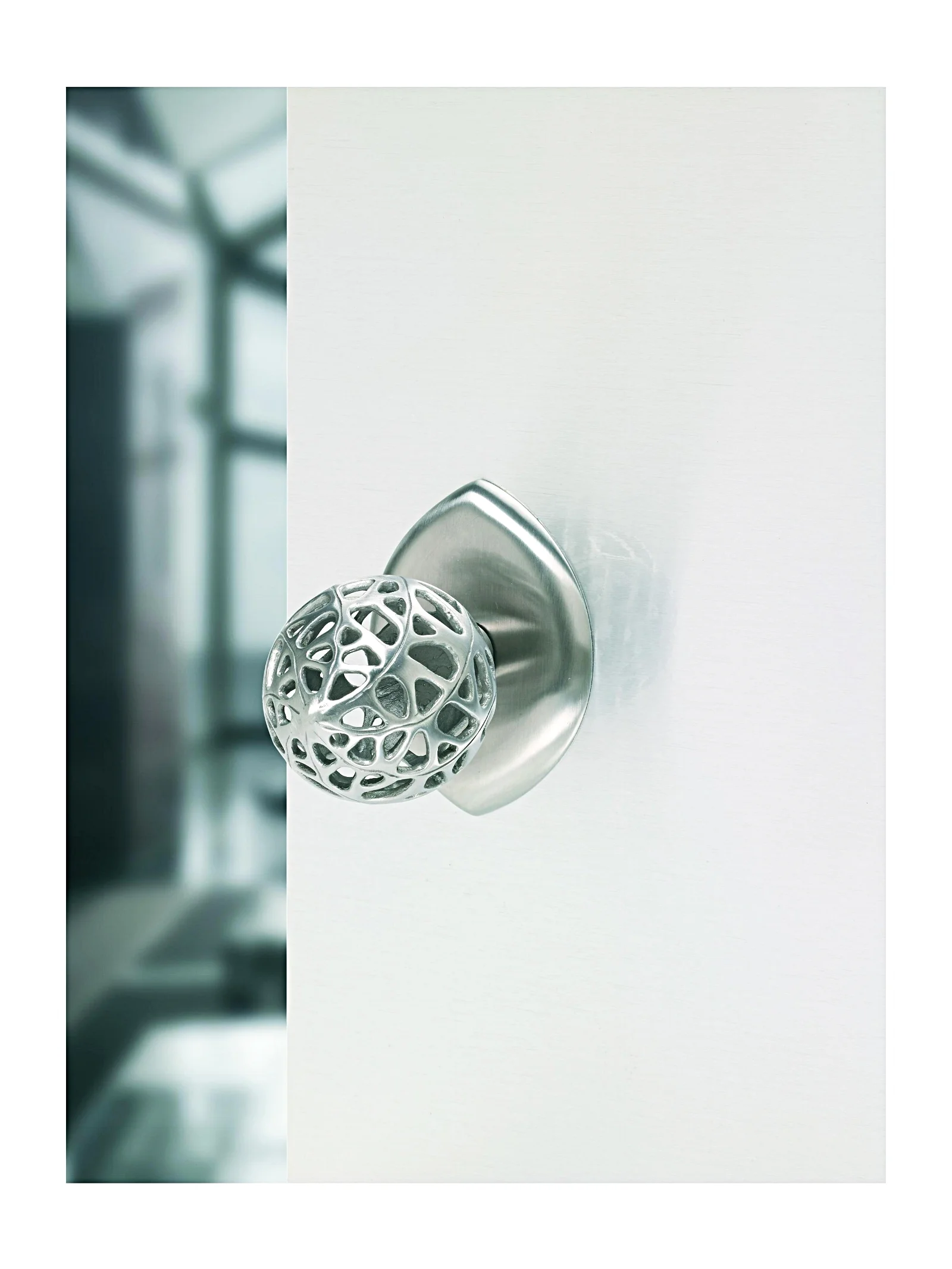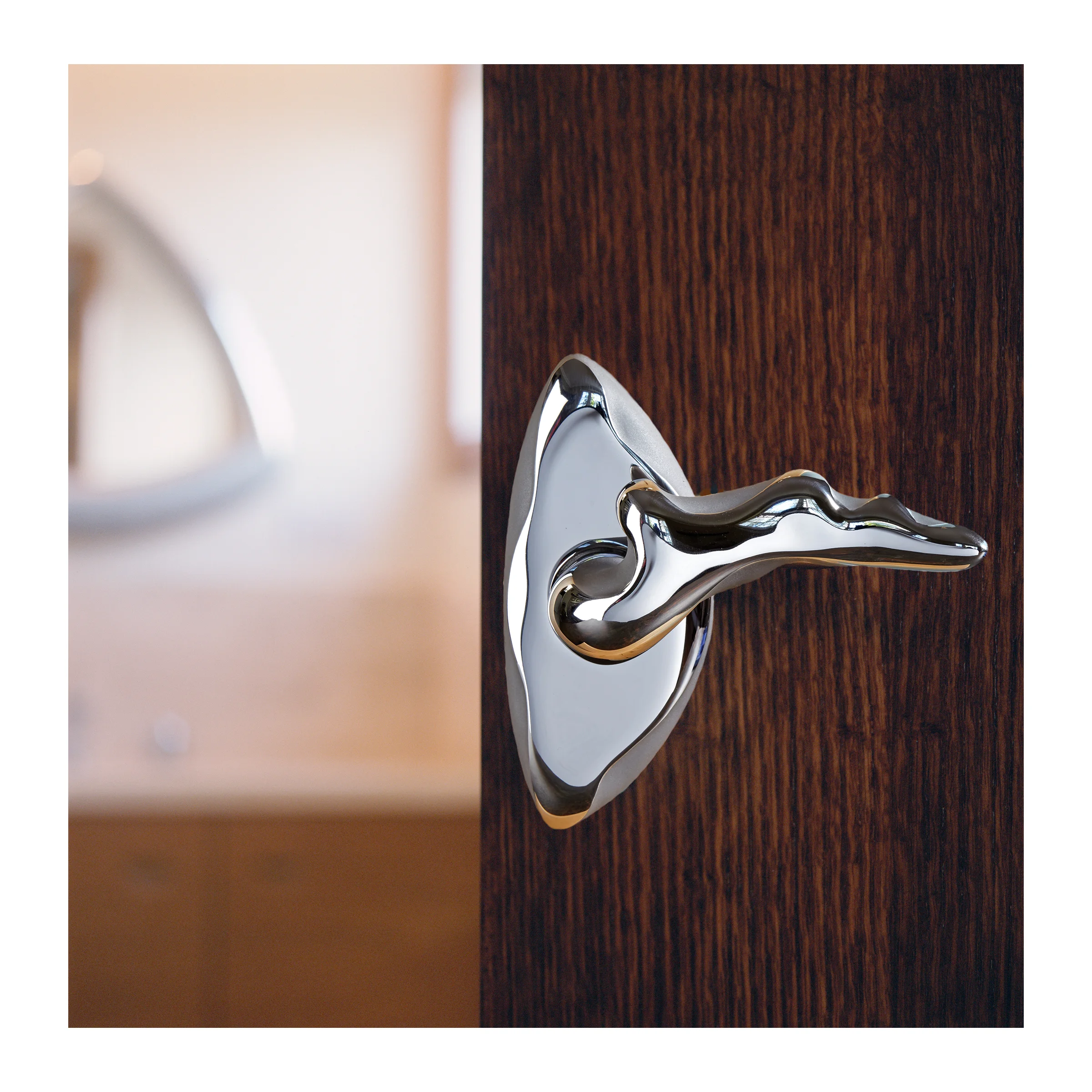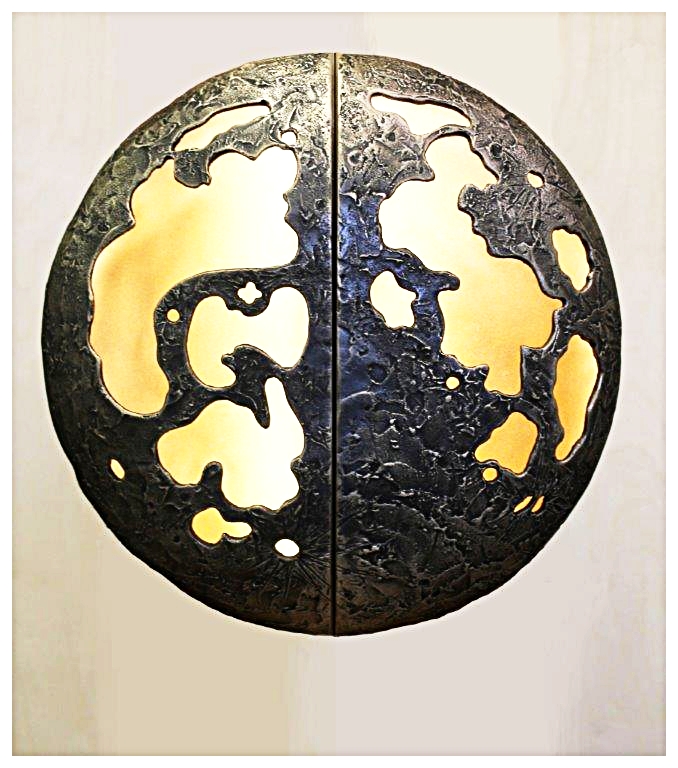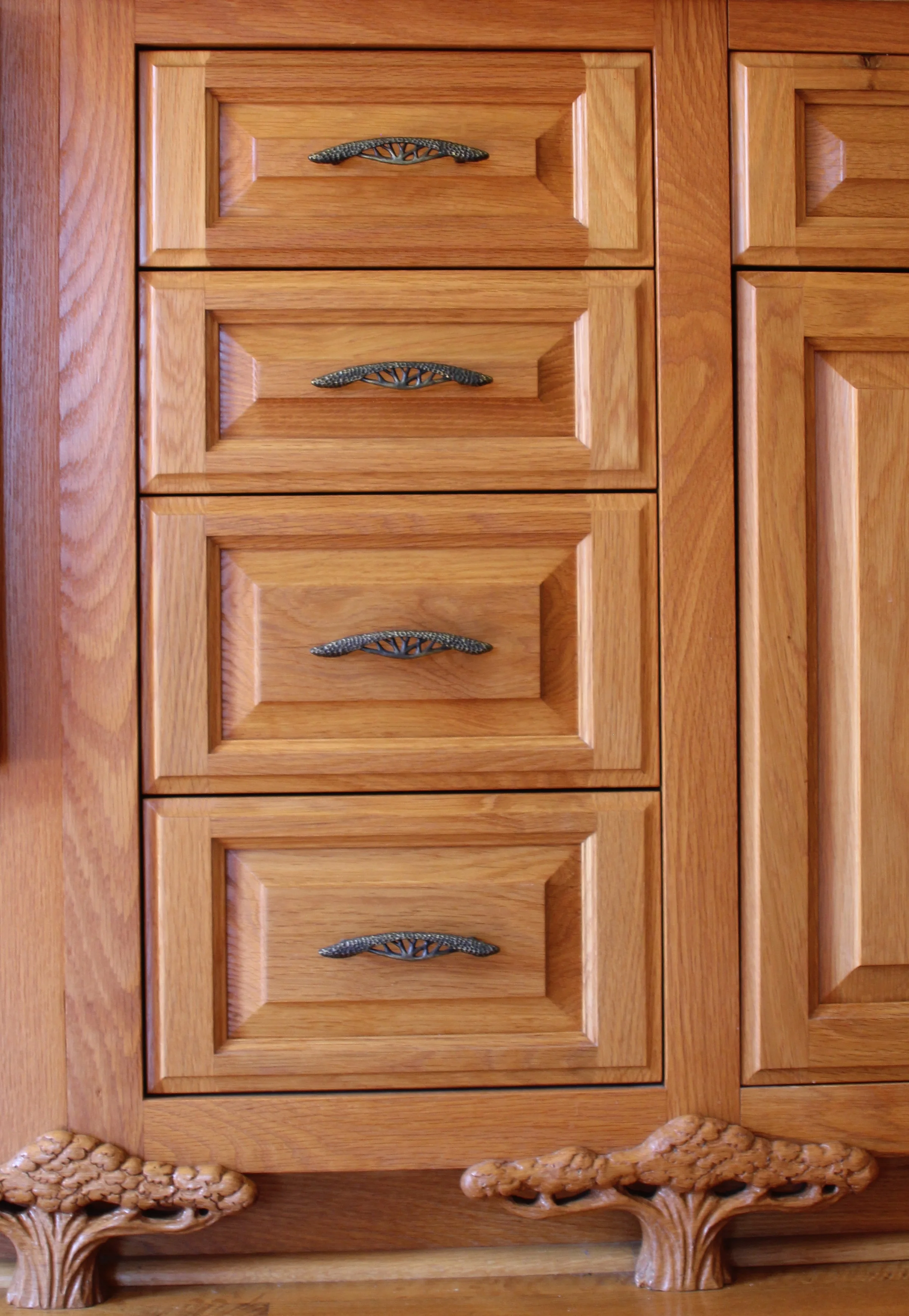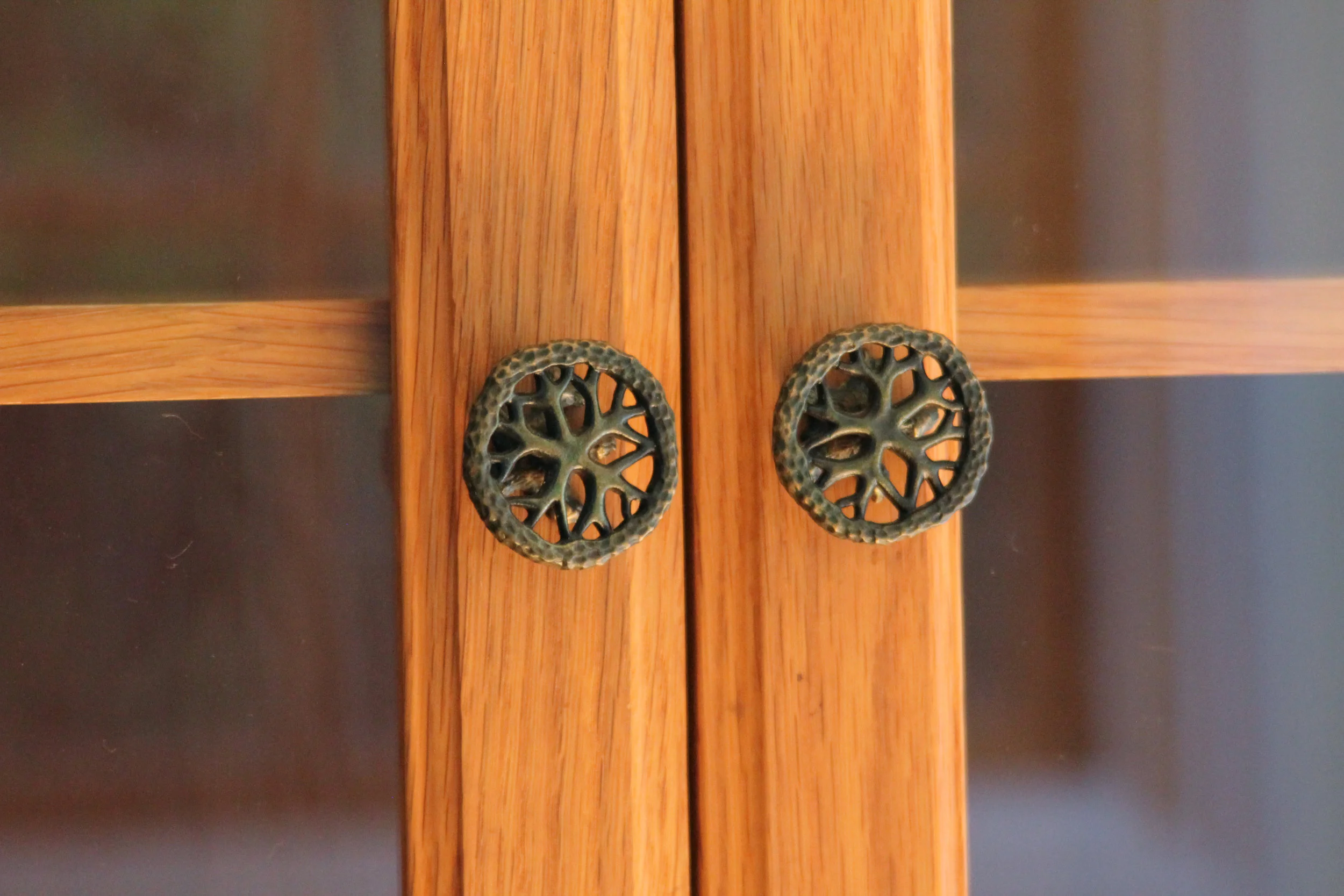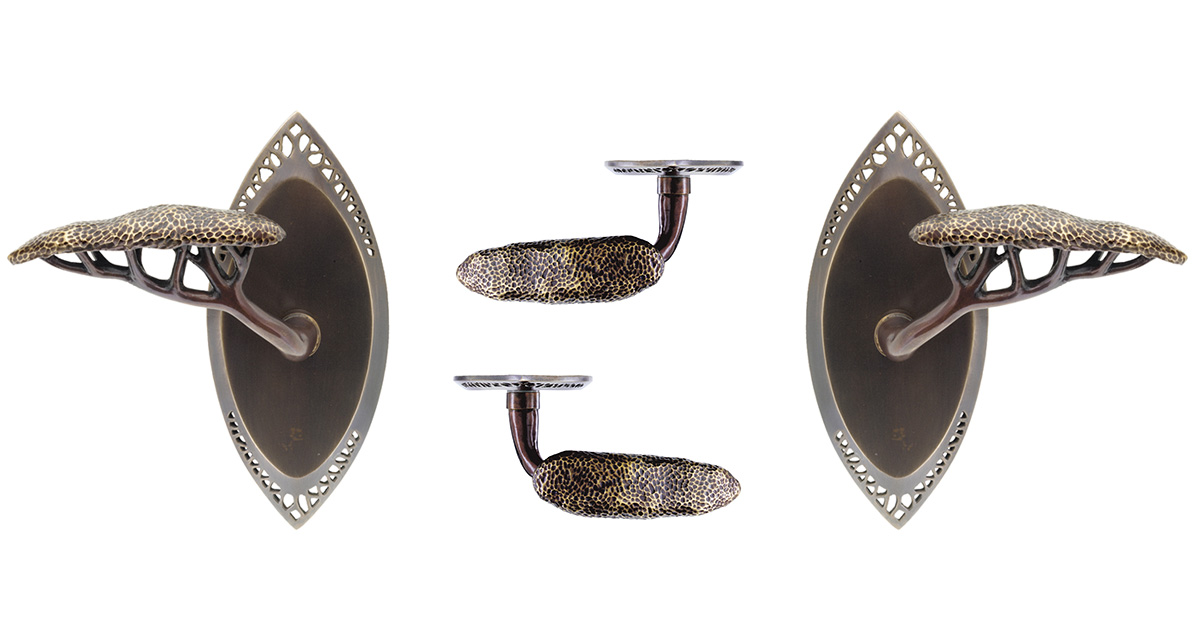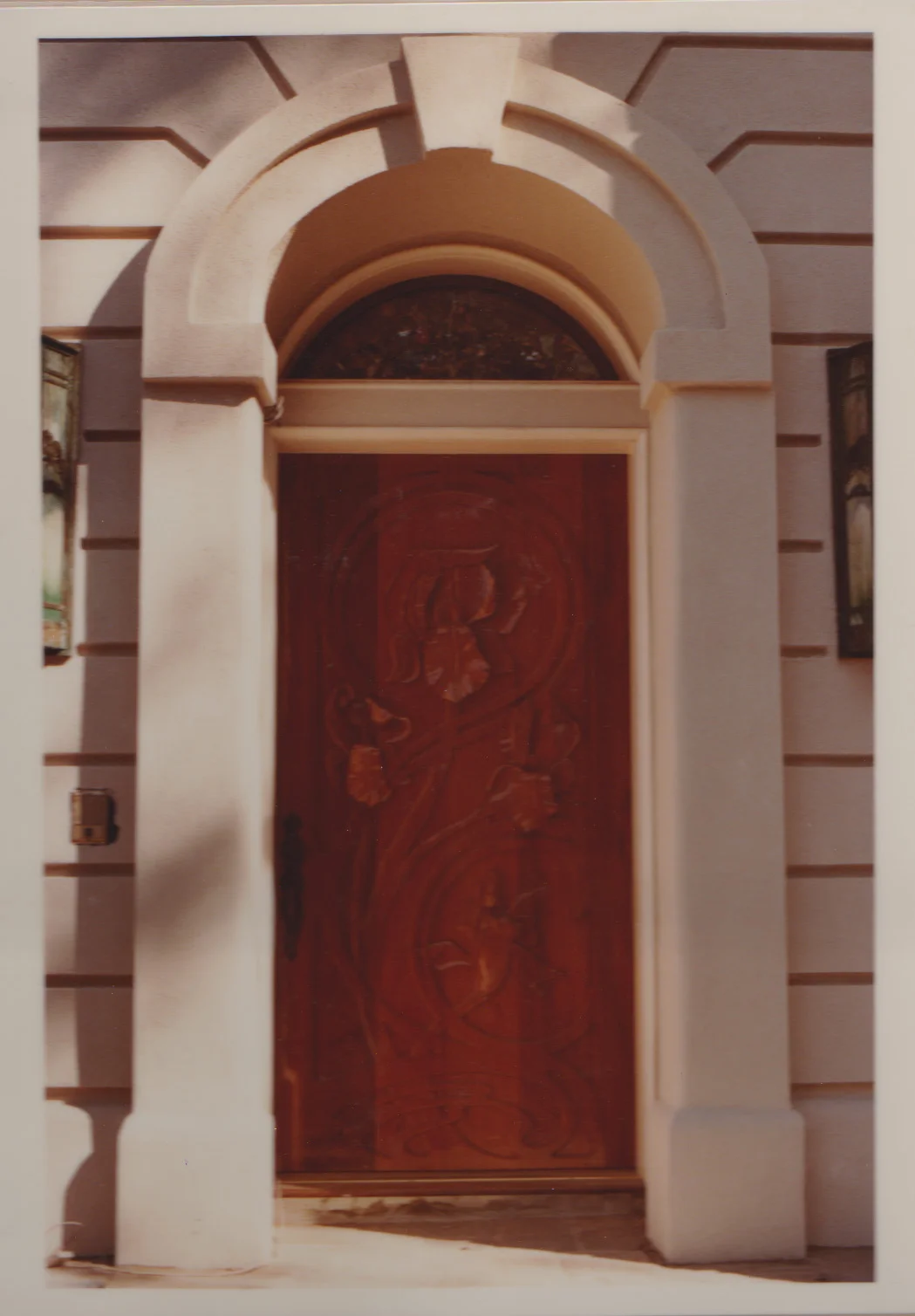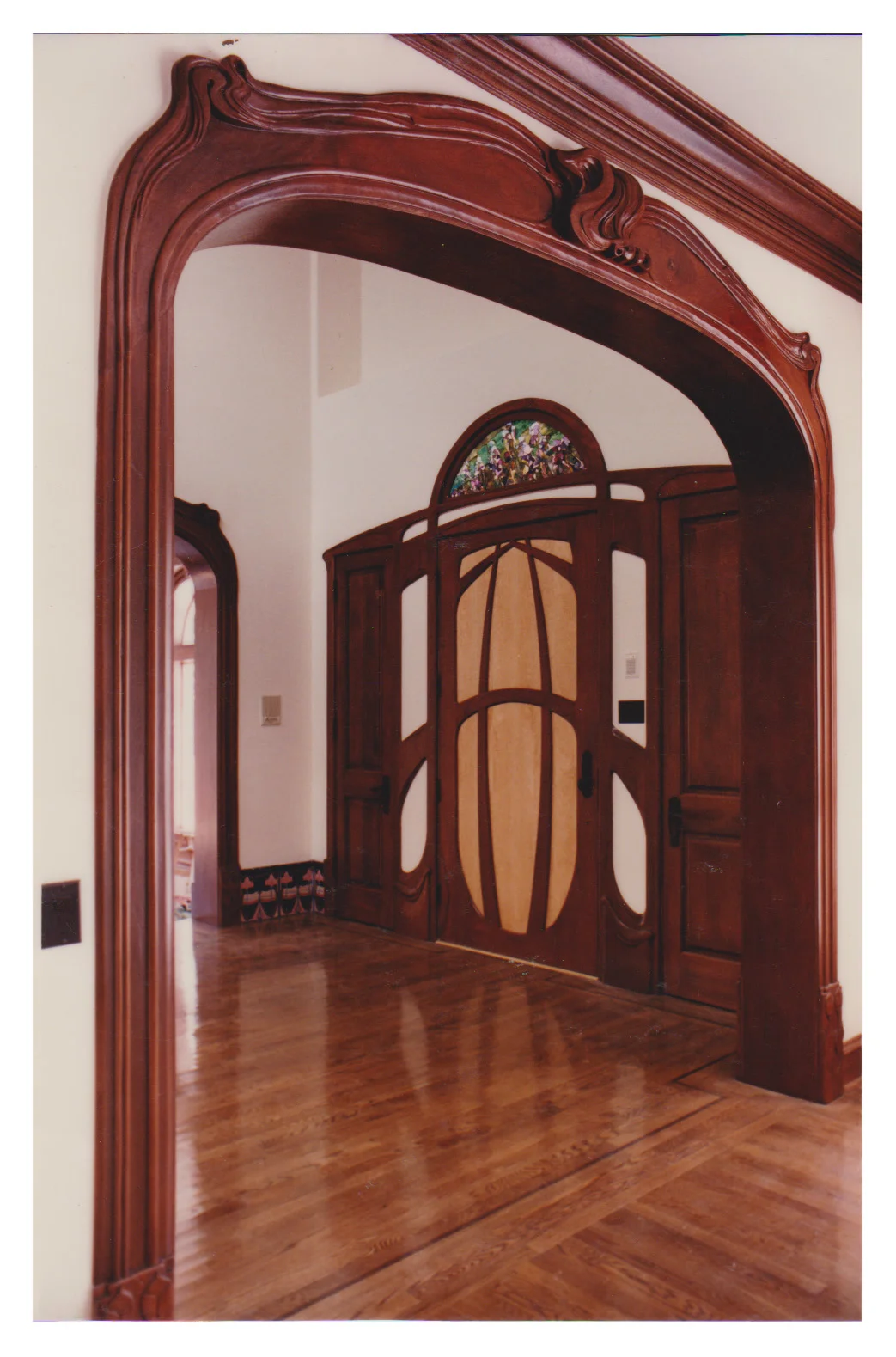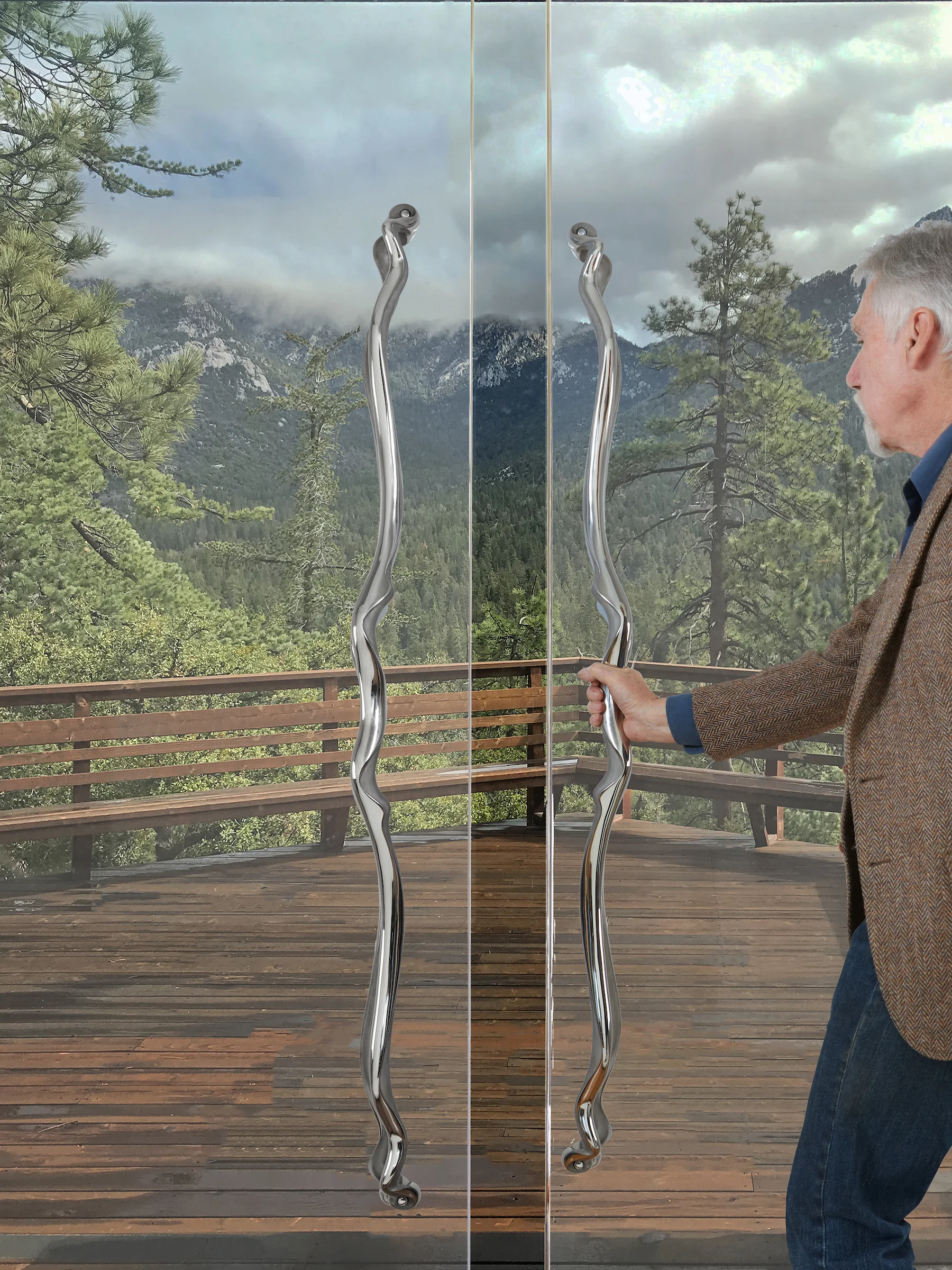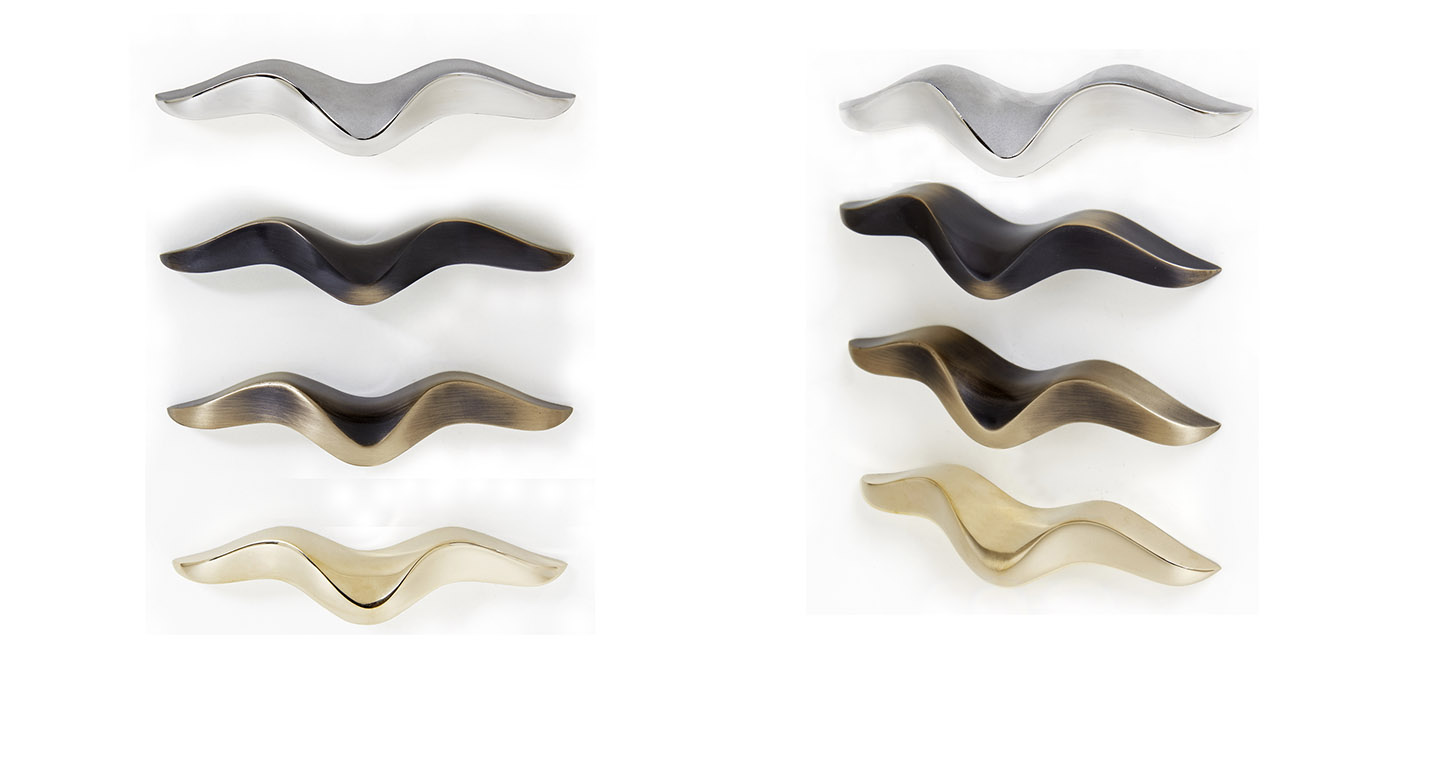We have in the past discussed the pros and cons of using 3d printing in the casting process and return to this topic to describe our most recent commission. The willow door knob was featured in the last post and coincidentally it is this piece that inspired the current work. While it is technically a door knob it’s scale is regal and it was designed to take center stage as a dramatic door statement. When first designed the piece was intended to be used as non-operative pull that would be used to open an entry door but with a separate thumb latch trim operating the door latch as is shown in the photo.
In European doors particularly in the baroque period such grand knobs often fully functioned to open and close the door and a local artisan would fabricate a mortise latch for a very deep back-set to reach the center of the door. With this in mind the second Willow knob was designed in 2 pieces with the knob being separate from the back-plate and mounted on a spindle that can be rotated to activate the door latch.
The current commission uses the same concept but the style of knob is simpler with no filigree and is designed for a less ornate setting. The Willow knob being elliptical and with many layers of filigree was carved over a period of weeks. Our commissioned knob needs to be made from design to delivery in 10 weeks and will be cast in stainless steel. As the piece is symmetrical circular and as we have a great pool of lathe artisans in Los Angeles we have found that it is faster to slab up a block of wood and have it turned on a manual lathe rather than 3d printed.

